Photography courtesy of Lowell Washburn, all rights reserved.
Warm in the sunshine, but cool in the shade. That’s just one of a thousand things that I like about October — my favorite month of the year. October is the one month that nobody complains about. For those who enjoy the outdoors, it is a time of infinite variety. Fall fishing is at its peak, deer are becoming increasingly active, tree dwelling squirrels are getting easier to spot, upland bird seasons are at hand.
There are, in fact, only two things that I do not like about October. One is that, sooner or later, all that beautiful autumn color will fall to the ground. The other is that October is the month when Iowa wood ducks depart for the South.
Although I try to avoid those “what is your favorite duck” kind of discussions, the wood duck is sure to be a top contender if I ever do get roped into one of those debates. The colorful woodie has everything it needs to make the “World Class Waterfowl” short list. Elegant in design and stunningly beautiful, the wood duck is a true Beau Brummell of waterfowl. Wood ducks are nervous and elusive yet display a positive response to strategically placed decoys. Abundant in season, they provide unparalleled table fare — especially when fattened on fresh acorns. But perhaps the wood duck’s most endearing trait is the species’ uncanny ability to lure human admirers to some of the most secluded and incredibly beautiful wetlands that the flyways have to offer.
When it comes to being flat out reclusive, wood ducks wrote the book. Shunning the high visibility habitats of open lakes and ponds, wood ducks choose to frequent the most impenetrable, densely vegetated and thickly wooded wetlands imaginable. Roosting birds take wing at the first hint of dawn; traveling to nearby uplands in search of acorns. Fully gorged with all the mast they can swallow, woodies usually arrive back at daytime loafing areas well before sunrise.
Wood ducks are early migrants. In Northern Iowa [where I live], populations are on the wane by the second week of October. Wood duck hunters are living on borrowed time by mid-month. By November 1st, the birds have vanished. Sad to say, but we are currently on the downhill side of this year’s flight.
With the days falling from this month’s calendar like leaves from a cottonwood, the message was clear. If I wanted to squeeze in one last morning with wood ducks, then I had better get it in gear. Unloading my usual rig of mallard and teal decoys, I replaced the set with a single bag containing eight lightweight wood ducks. In spite of its modest number, the diminutive little spread would be more than enough for the place I had in mind.
Located on a popular public hunting area, I had discovered the spot purely by accident — a miniscule little puddle sequestered within a oak woodland best known for its deer hunting. The pond — if you could really call it that — was in an opening where mature forest gave way to a tangle of thick understory and flooded willow. Barely 20 yards in width, it was a place where no self respecting “normal” duck hunter would consider going. But for those of us who pursue wood ducks, the tangle was an obvious paradise — a literal Wood Duck Honey Hole.
Arriving at the pond 45 minutes before sunrise, I quickly placed my eight decoys and took a seat against one of the flooded willows. The suspense soon heightened as nighttime stars began to fade. If wood ducks were going to show, they would certainly be here soon.
It was a short wait. The dimming stars had not entirely disappeared when the first flock arrived; a group of five woodies that came twisting down through the treetops and noisily splashed in among the decoys. A single hen was the next to arrive, loudly announcing her presence with the species’ unique screeching call.
From then on, things got busy as a nonstop procession of ducks continued to arrive and pitch in. Within a few short minutes, the pond’s surface had become covered with birds. The puddle now contained more fowl per square meter than any other wetland I could think of. Groups of wood ducks were swimming in and out of the decoys while other bunches busily explored the pond’s emergent vegetation. A few ducks were even paddling through the partially submerged branches of the willows I was sitting in, with some birds venturing to within 8 or 10 feet on my position.
The sound effects were spectacular. New groups of incoming “screechers” were enthusiastically greeted by flocks already on the water. Wood ducks possess a complicated array of vocalizations, and the scene presented a rare opportunity for the close up enjoyment of their diverse communications.
The amazing show continued as daylight slowly increased. I kept checking my watch until eventually, the half-hour-before-sunrise legal shooting time finally arrived. Considering the current level of traffic, it didn’t take long to collect the three bird limit. Not surprisingly, the woodies turned out to be as fat as they were beautiful. As anticipated, they also provided unparalleled table fare. Best of all, the October outing had supplied a unique waterfowl hunting adventure. The memory of that beautiful morning with its sky full of birds will remain vividly fresh until long after the last wood duck has headed south for the winter.

![1] Beau Brummell](https://iawildlife.org/wp-content/uploads/2014/10/1-Beau-Brummell-247x300.jpg)
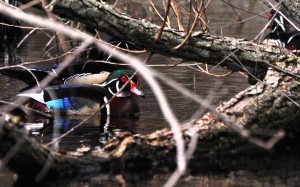
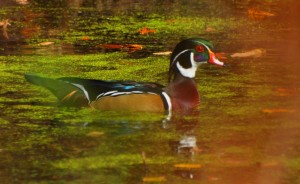

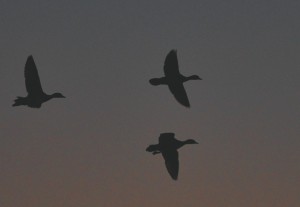
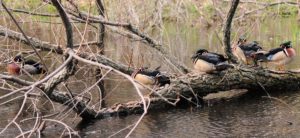
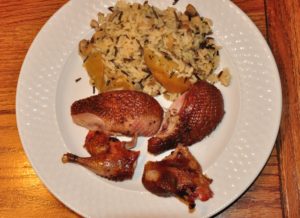
 Tom Cope
Tom Cope Sue Wilkinson
Sue Wilkinson Susan Judkins Josten
Susan Judkins Josten Rudi Roeslein
Rudi Roeslein Elyssa McFarland
Elyssa McFarland Mark Langgin
Mark Langgin Adam Janke
Adam Janke Joe Henry
Joe Henry Kristin Ashenbrenner
Kristin Ashenbrenner Joe Wilkinson
Joe Wilkinson Dr. Tammy Mildenstein
Dr. Tammy Mildenstein Sean McMahon
Sean McMahon